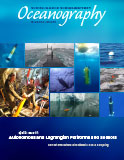First Paragraph
Free-swimming autonomous underwater vehicles (AUVs) are distinct from tethered remotely operated vehicles (ROVs) and human-occupied vehicles in the amount of data-driven feedback a human can provide during a mission. While free-space optical communications afford tether-equivalent data rates at relatively close ranges (Farr et al., 2010), most AUVs employ acoustic modems to maintain two-way communications with their operators while underway (Freitag et al., 2005). However, the low bandwidths and high latencies inherent in underwater acoustics prohibit the real-time transmission of data generated by imaging sensors such as cameras and side-scan sonars. This has profound implications with regard to the meaning of the data an AUV collects and the trust an operator has in the AUV’s autonomy to react to data in the absence of direct human oversight.

